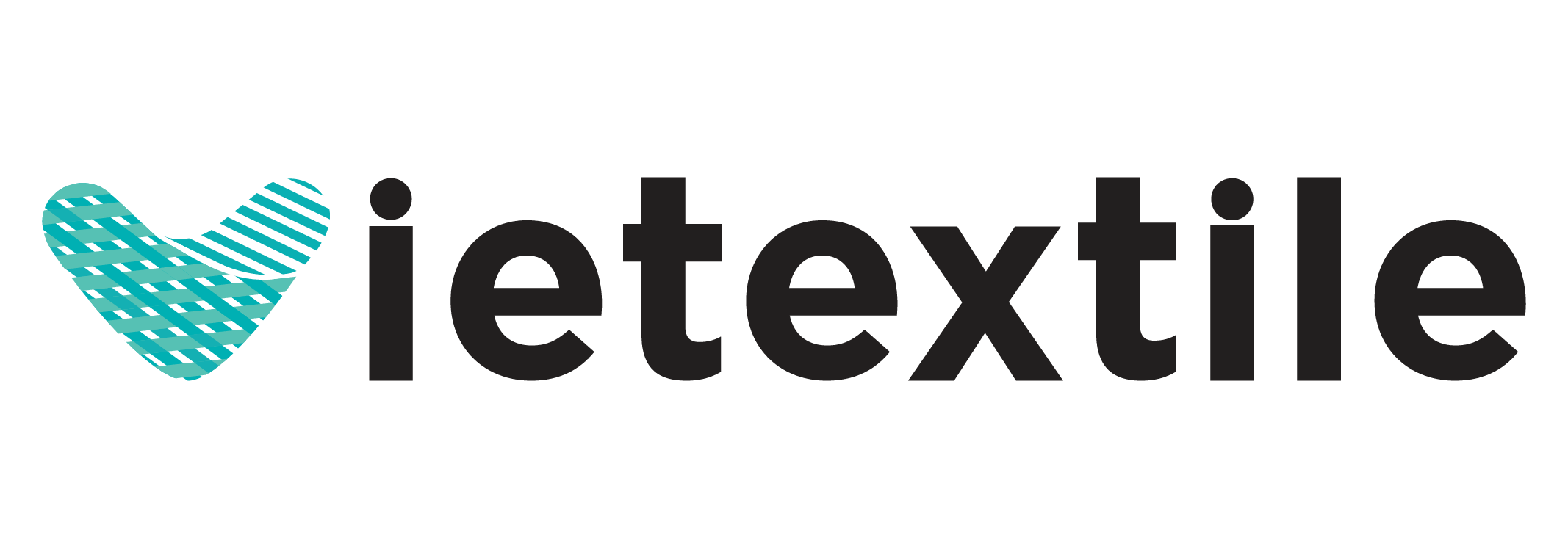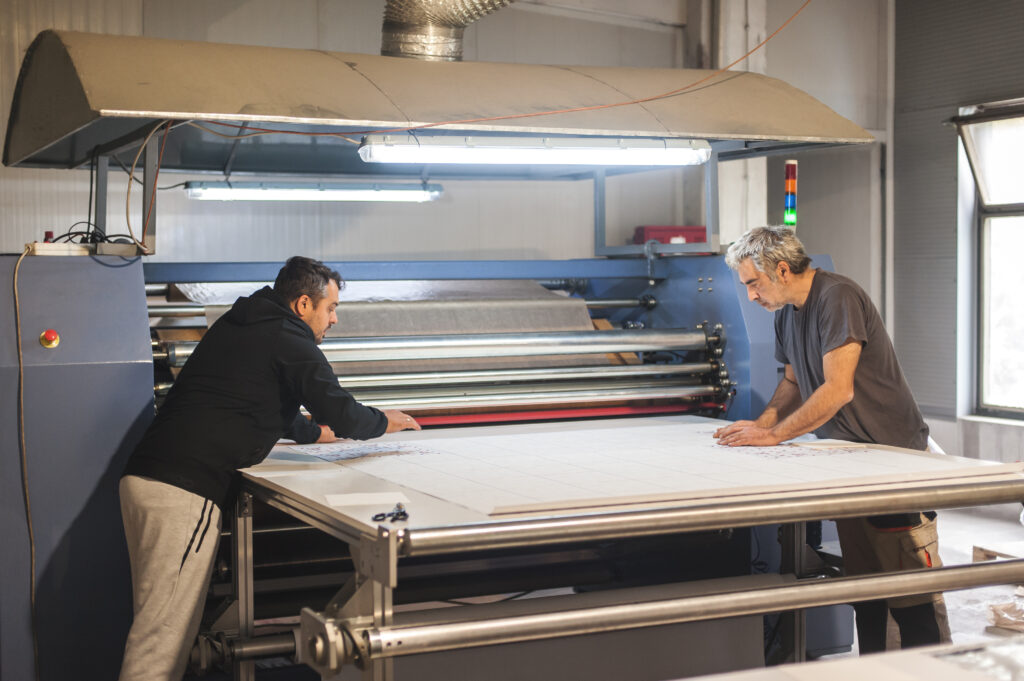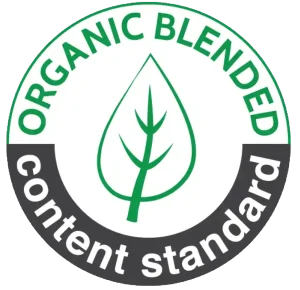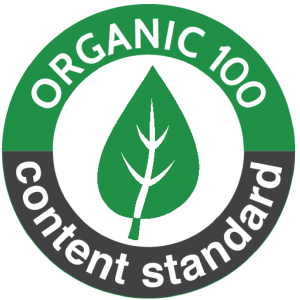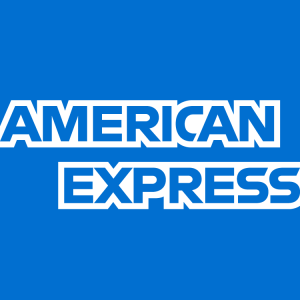Digital Fabric Printers: Your Buyer’s Guide
As demand for personalized and fast-turnaround textiles skyrockets, investing in the right equipment has never been more critical. The market for digital fabric printers for sale is vast, with options ranging from desktop models to industrial powerhouses. How do you choose the right one for your business?
When buying a digital fabric printer, assess your production needs (volume, fabric type), compare technologies (DTG for cotton, sublimation for polyester), evaluate the total cost of ownership (machine, ink, maintenance), and choose a reliable supplier offering strong technical support.
This essential 5-step buyer’s guide will walk you through everything you need to know to make a smart, profitable investment.
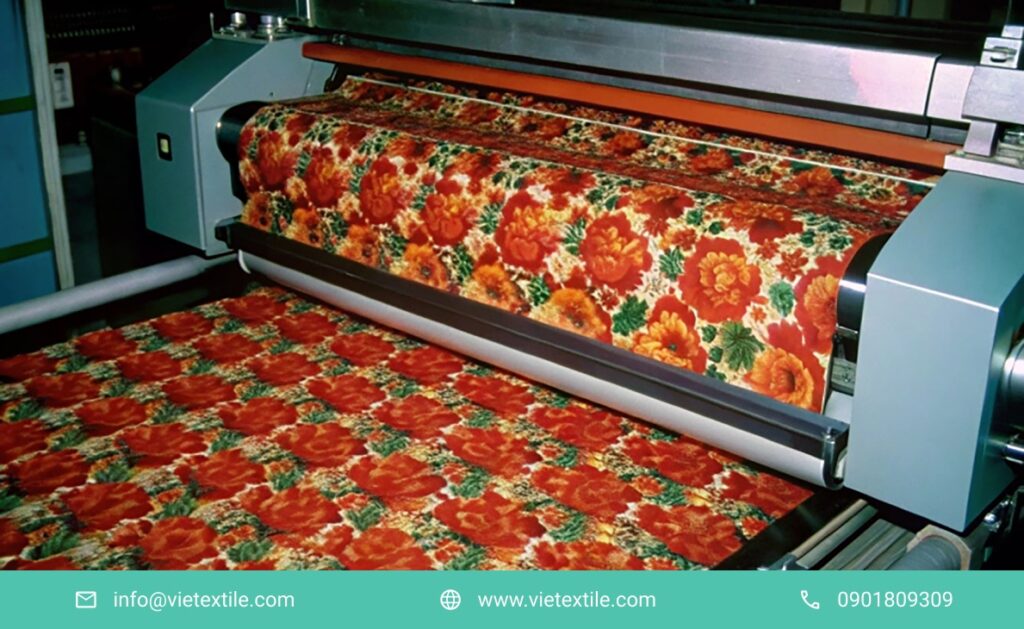
Step 1: Understand the Core Printing Technologies
Nội dung tóm tắt
ToggleWhen searching for digital fabric printers for sale, it’s essential to understand that this isn’t a one-size-fits-all solution. Different printing technologies serve different purposes. The two most common methods; Direct-to-Garment (DTG) and Dye Sublimation; are fundamentally distinct in terms of fabric compatibility, print quality, and production workflow. Choosing the right one can dramatically impact your efficiency, product performance, and return on investment.
| Technology | Direct-to-Garment (DTG) | Dye-Sublimation |
|---|---|---|
| How It Works | Sprays water-based ink directly onto the fabric, like an inkjet paper printer. | Prints ink onto special transfer paper, which is then heat-pressed onto the fabric, turning the ink into a gas that bonds with the fibers. |
| Best For | Natural fibers: like cotton, linen, bamboo, and hemp. | Synthetic fibers: Polyester, poly-blends (100% polyester is ideal) and polymer-coated hard surfaces. |
| Feel of Print | Soft, breathable, as the ink soaks into the fibers. | No feel at all; the ink becomes part of the fabric. |
| Ideal Products | T-shirts, hoodies, tote bags. | Sportswear, banners, mugs, photo panels. |
Step 2: Know Yourself Before Buying: Self-Assessment Before Choosing Digital Fabric Printers for Sale
Before diving into any listings of digital fabric printers for sale, take a moment to assess your actual needs. What types of fabrics will you print on? How large is your production volume? What level of color accuracy do your clients expect? A clear understanding of your workflow, budget, and product goals will help you filter through the noise and focus only on printers that truly meet your demands. This self-assessment is a critical first step in making a smart, profitable investment.
- What is your primary product? What are you printing most? If your core products are cotton-based items like T-shirts, hoodies, or babywear, then Direct-to-Garment (DTG) printing is your best fit. On the other hand, if you focus on polyester sportswear, flags, or large-format signage, then dye-sublimation printing will serve you better. Choosing the right printer based on your primary product type directly impacts print quality, durability, and customer satisfaction. Don’t let the wrong technology hold your brand back.
- What is your business model? Understanding your business model is key to selecting the right digital fabric printer. If you’re running a low-volume, high-customization shop, like selling personalized apparel on Etsy or Shopify, then a compact DTG printer offers flexibility and low setup cost. But if you’re a high-volume B2B supplier catering to wholesale or fashion brands, you’ll need industrial-grade printers that prioritize speed, consistency, and bulk efficiency. Your printing solution should scale with your goals—choose the machine that fits your business strategy, not just your budget.
- Who is your target market? Knowing your target audience helps you select the right printing method and material. If you’re selling to eco-conscious consumers, they often prefer the soft, natural texture of cotton garments printed via DTG (Direct-to-Garment). On the other hand, if your market includes athletes or performance apparel brands, sublimated polyester offers moisture-wicking, durable prints ideal for activewear. Your audience’s preferences should directly influence your equipment choice and product lineup..
- What is your current skill level? Before buying any digital fabric printer, it’s essential to evaluate your team’s current technical expertise. While many modern machines are designed to be user-friendly, they still demand a solid understanding of maintenance, calibration, and basic troubleshooting. Being realistic about your internal capabilities helps you choose a model that matches your support structure; or identify the need for professional training or after-sales service plans..
- What are your projections for growth? When evaluating digital fabric printers for sale, don’t just focus on your current production needs; let think ahead. A machine that meets your demands today might become a bottleneck tomorrow. Choose a Digital Fabric Printers for Sale that not only suits your present operations but can also scale with your business growth, whether in volume, complexity, or product range. This future-ready mindset can save you from costly upgrades down the line.
.
Step 3: Compare Machine Types and Sizes
With your needs defined, you can now filter the digital fabric printers for sale by their physical class and requirements.
- Desktop or small-format digital fabric printers are the ideal entry point for entrepreneurs and small businesses. Compact and budget-friendly, they’re perfect for customized T-shirts, small product batches, or personalized items in retail settings. While they offer limited print size and slower output, their affordability and ease of use make them a smart choice for businesses starting out or testing new markets.
- Industrial or large-format digital fabric printers are engineered for continuous, high-volume production. Built with multiple print heads and capable of handling wide roll-to-roll operations, these printers are ideal for factories and large-scale textile manufacturers. Investing in an industrial fabric printer means committing to serious output, higher efficiency, and long-term scalability. However, it also demands proper factory space, trained personnel, and reliable maintenance infrastructure:
- Space & Ventilation: When investing in an industrial digital fabric printer, adequate space and ventilation are critical. These machines are physically large and often generate heat and vapors during operation. To maintain optimal working conditions and extend machine lifespan, businesses must allocate dedicated factory floor space and ensure proper air circulation or exhaust systems. This not only protects your equipment but also supports a safer, healthier working environment..
- Power: Most industrial-grade Digital Fabric Printers for Sale require three-phase power to operate efficiently. Unlike smaller desktop units that can run on regular household electricity, these high-capacity machines demand a stable and robust electrical setup to maintain performance and avoid damage. Before purchasing, ensure your facility is equipped with industrial-grade power infrastructure to support continuous production without interruptions.
- Software: Industrial Digital Fabric Printers for Sale usually rely on advanced RIP (Raster Image Processor) software to manage color accuracy, file processing, and printer calibration. While this software unlocks professional-grade output, it often comes with additional licensing costs and a technical learning curve for operators. Choosing a printer also means evaluating whether the included software supports your workflow efficiently and whether training is provided by the supplier.
Step 4: Analyze the Total Cost of Investment
When investing in textile machinery, the upfront price is just the beginning. A savvy decision-maker must assess the Total Cost of Ownership (TCO)—including energy usage, maintenance, spare parts, and machine lifespan. Evaluating TCO ensures you’re not just buying the cheapest machine, but the one that delivers the best long-term value and reliability.
Initial Machine Price (Capital Expenditure)
The upfront cost of a fabric printer is the most visible part of your investment—but it can vary significantly based on print capacity, technology, and brand reputation. Entry-level models may start under $20,000, while advanced DTF, DTG, or industrial digital textile printers can soar past $500,000. Evaluating not just the purchase price but the machine’s long-term output efficiency is critical for making a smart investment.
- For businesses just starting in Digital Fabric Printers for Sale, small-format DTG or sublimation printers offer a practical and cost-effective solution. Prices typically range between $15,000 and $30,000 USD, making them ideal for startups, design studios, or limited production runs. Despite the lower investment, these machines still deliver impressive print quality and color accuracy for t-shirts, accessories, and sample production.
- Industrial-Scale Fabric Printers: High Investment, High Output When scaling up production, industrial-scale fabric printers represent a major investment. These machines generally start at $100,000 USD, with high-end models reaching over $500,000 USD. Designed for continuous, high-speed operations, they support wide-format printing, superior color control, and advanced ink systems—ideal for mass production in textile factories and large garment manufacturers.
Recurring Costs Digital Fabric Printers for Sale (Operating Expenditure)
Every hidden expense, from print heads to maintenance parts, adds up and directly affects your cost-per-print. These operational costs play a crucial role in determining your printing business’s profitability. Before investing in any Digital Fabric Printers for Sale, smart businesses should calculate not just upfront expenses, but ongoing ones too. Ignoring them can erode your margins and make even a high-performance printer a poor investment.
- Ink Cost: Ink is not just a consumable; it’s the largest ongoing cost in digital fabric printing. Always research the price per liter and evaluate the printer’s average ink consumption rate under real production conditions. Over time, ink expenses can outweigh the initial machine investment. A cost-effective printer isn’t just affordable upfront; it must also deliver ink efficiency to sustain long-term profitability..
- Consumables: When calculating your total operating expenses, don’t forget consumables. These include pre-treatment fluid for Digital Fabric Printers for Sale, sublimation transfer paper, and protective paper for heat presses. Each plays a vital role in ensuring print quality and equipment longevity. Poor-quality consumables can result in reprints, fabric damage, or even machine malfunctions—leading to hidden costs and lost productivity. Always factor these into your cost-per-print analysis.
. - RIP Software: When evaluating digital fabric printers for sale, don’t overlook the cost of RIP software and design tool subscriptions. Many advanced printing systems require ongoing payments for access to proprietary software that controls color management, layout, and precision print settings. These tools are essential for professional results; but they can significantly add to your total cost of ownership (TCO). Always check whether software is included, one-time licensed, or subscription-based..
Long-Term Maintenance Costs of Digital Fabric Printers for Sale
All textile printers—especially industrial ones—have mechanical parts that wear out over time, such as printheads, capping stations, ink pumps, and belts. These components not only affect print quality but also impact machine downtime and overall operating costs. When evaluating a fabric printer, it’s essential to consider the availability, lifespan, and replacement cost of these parts to avoid production delays and ensure long-term efficiency.
- Printheads are the most expensive consumables in a fabric printer, with prices ranging from $1,000 to $3,000 USD each. Their performance directly impacts color accuracy, sharpness, and production speed. While some can last for millions of shots, others may degrade faster if clogged or poorly maintained. Regular cleaning and correct ink usage are crucial to extend their lifespan and avoid unexpected replacement costs.
- Maintenance Parts: In industrial fabric printing, components like capping stations, wiper blades, and dampers may seem small, but they play a big role in maintaining print quality. These parts wear out over time and must be replaced regularly to prevent nozzle clogs, color banding, or ink leakage. Smart businesses include these in their monthly operational budgets to keep downtime and repair costs at a minimum. Ignoring them can lead to costly head failures and production delays.
Step 5: Choose the Right Supplier When Buying Digital Fabric Printers For Sale
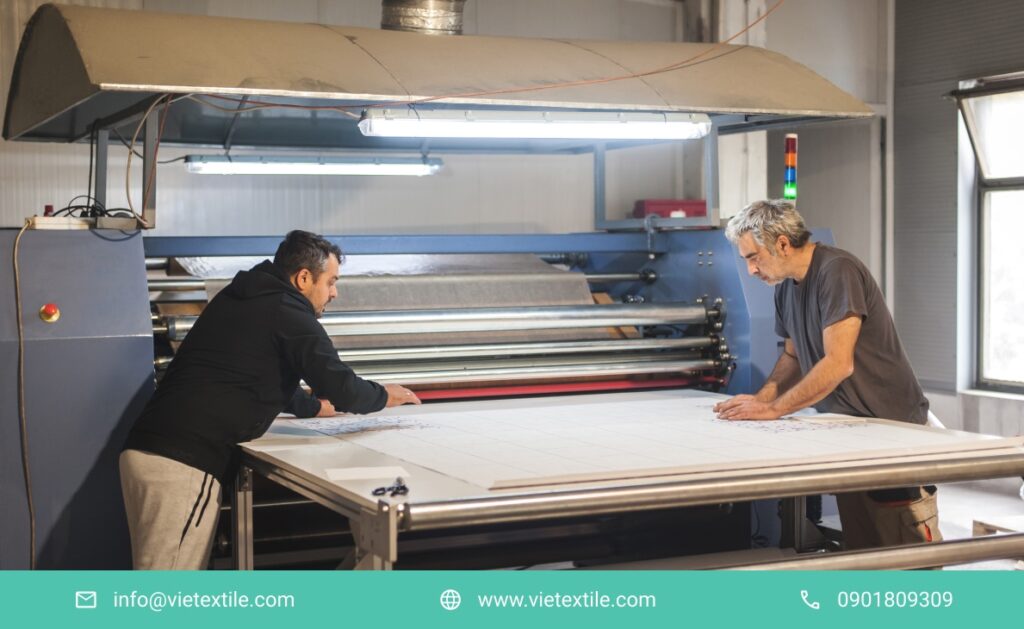
When investing in Digital Fabric Printers for Sale, who you buy from is just as critical as what you buy. A reliable supplier isn’t just a vendor; they’re a motivative strategic partner. The right partner will provide technical support of Digital Fabric Printers for Sale, operator training, fast spare parts delivery, and long-term guidance to maximize your machine’s value. Don’t just compare machines, let compare suppliers.
- Expert Consultation: Price isn’t everything when investing in a digital fabric printers for sale. The best suppliers or consultants should guide you based on your production goals, fabric types, ink compatibility, and budget—not push the most expensive machine. The right Digital Fabric Printers for Sale are one that aligns with your business’s real needs, supports long-term scalability, and ensures quality without inflating costs. Making an informed choice saves you more than just money—it saves production headaches down the road.
. - Installation & Training: When purchasing a Digital Fabric Printers for Sale, professional on-site installation and operator training are not optional—they’re essential. Proper setup ensures the machine runs at peak performance from day one. Meanwhile, hands-on training reduces errors, boosts efficiency, and prolongs equipment life. Never settle for a supplier who skips this step; your investment depends on it.
. - After-Sales Support: When purchasing a Digital Fabric Printers for Sale, after-sales support is not just a bonus—it’s a necessity. Ensure your supplier provides fast, multi-channel technical assistance (phone, video, on-site), clear warranty policies, and readily available spare parts. Poor support can lead to extended downtime, lost revenue, and frustrated operators. As emphasized by PRINTING United Alliance, robust after-sales service is a critical component of long-term printing success and should heavily influence your buying decision.
. - Financing Options: Investing in a high-end Digital Fabric Printers for Sale doesn’t always require full upfront payment. Many reputable suppliers offer flexible financing plans, including leasing or installment options, to help businesses of all sizes upgrade their production. With financing, textile manufacturers can access advanced printing technology while managing cash flow effectively—making innovation more affordable than ever.
.
Find Your Ideal Digital Fabric Printers for Sale at VieTextile
At VieTextile, we don’t just have digital fabric printers for sale; we provide complete, tailored solutions. Our team of experts will work with you to understand your goals, recommend the right technology, and provide the ongoing support you need to succeed.
We are a leading supplier of premium DTG and dye-sublimation printers, committed to helping businesses of all sizes find the right printing solution. Whether you’re a small studio or a high-volume manufacturer, we provide reliable, cost-effective machines tailored to your production scale and budget. Our team ensures every printer we deliver meets rigorous quality standards and delivers consistent results.
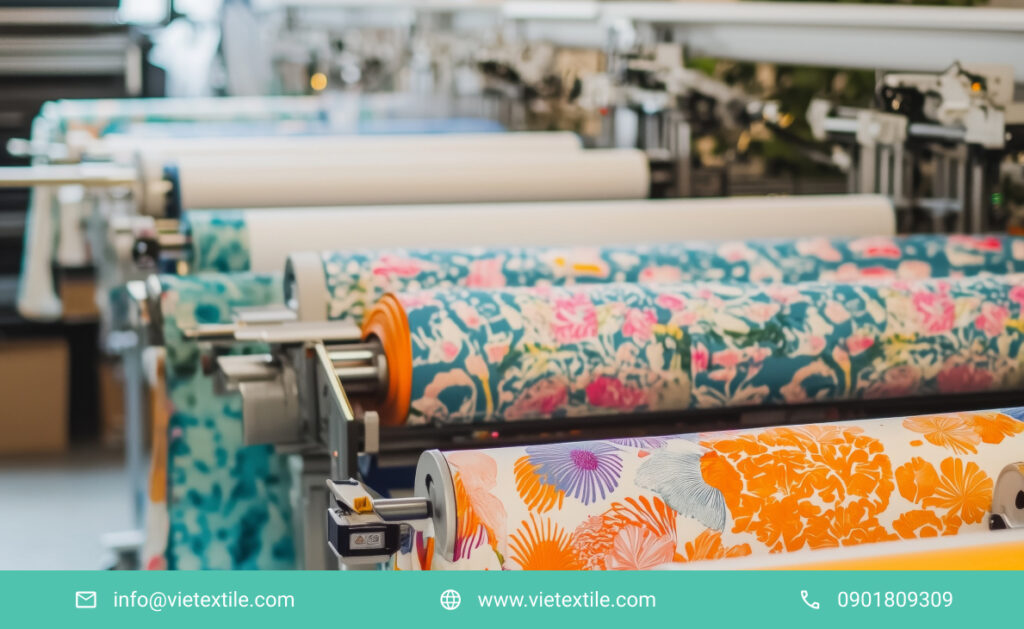
Ready to start or scale your printing business? Contact VieTextile today for a free consultation and a detailed quote.
FAQ
1. Can a single Digital Fabric Printers for Sale that print on all fabric types? No. Most printers are specialized. DTG printers excel on cotton and natural fibers, while dye-sublimation printers are designed specifically for polyester and polymer-coated items.
2. How often do I need to maintain a digital fabric printers for sale? Daily maintenance, including cleaning the print head and capping station, is essential to prevent clogs and ensure consistent quality. More intensive maintenance is typically required on a weekly or monthly basis.
3. Should I buy a used Digital Fabric Printers for Sale? Buying used can save money, but it carries risks. If you consider it, ensure the machine is thoroughly inspected by a qualified technician and that you can still source parts and ink for that model. A clear warranty or service history is a must.
4. How steep is the learning curve for operating these machines? Modern printers are becoming more user-friendly, but a basic understanding of graphic design software (like Adobe Photoshop/Illustrator) and a willingness to learn technical maintenance are required. Expect a few weeks of learning to become proficient.
